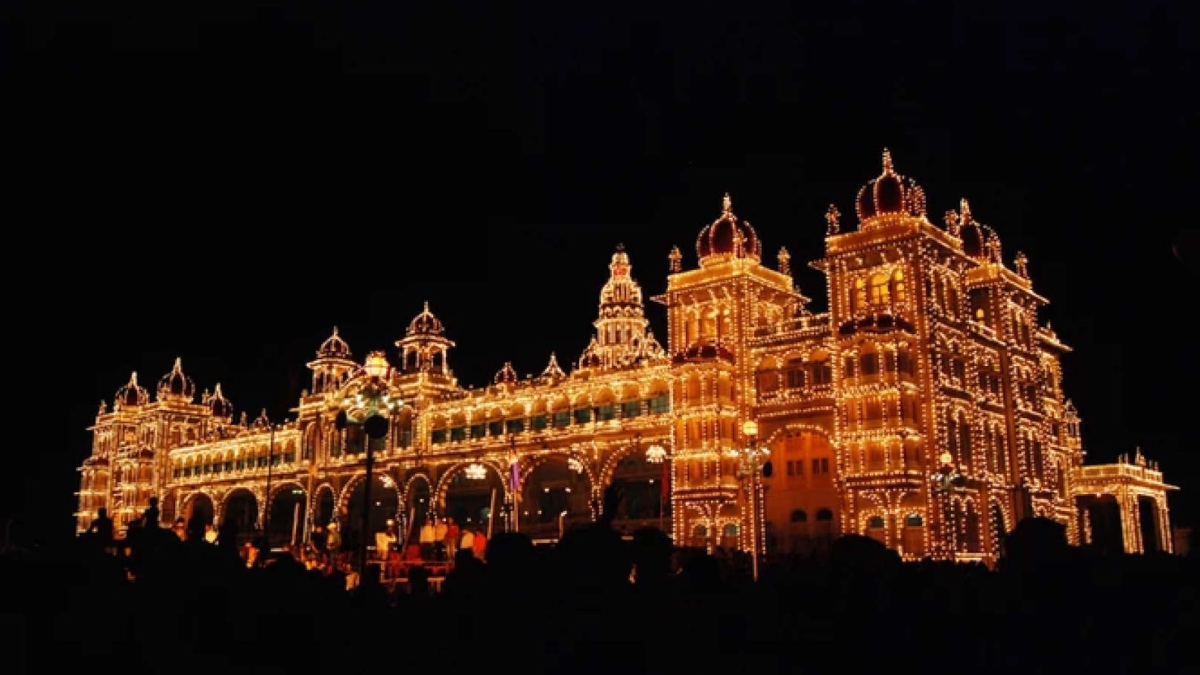


The Dasara festival at Mysore is renowned throughout the country for its flamboyance and pageantry. The annual 10-day-long celebrations are conducted with great pomp and show that culminate in the much-awaited grand procession which marks the finale of the festivities. The Amba Vilas Palace is the focus of all the activities and in fact, its spectacular illumination is yet another highlight not to be missed. Incidentally approx. 97,000 light bulbs are used for the purpose of this mega illumination. There are also numerous other traditional rituals and ceremonies that take place within the Palace precincts, these are not open for the public so as a photographer when I got the opportunity and privilege to document these proceedings I was but naturally rather overwhelmed. The year was 2012 and the Dasara Celebrations were presided over by the late Maharaja Srikantadatta Narsimharaja Wadiyar, the 26th head of the erstwhile Kingdom of Mysore.





The Mysore Palace or the Amba Vilas Palace, the official residence of the Mysore Royal family certainly takes your breath away. Constructed in the Indo – Saracenic style, this splendid edifice was designed by British architect Henry Irwin who has taken elements from Hindu, Islamic, Rajput, Mughal and Gothic styles of architecture and fused them brilliantly to create this incredible and magnificent structure. Here within the precincts, I was witness to numerous rituals, ceremonies, and pujas including the Ashwa and the Gaja puja (worship of the Horse and the Elephant) the Shastra Pujan – worshipping the Arms and weapons, the elaborate Royal Durbar, and even an annual wrestling competition all of which were presided over by the Maharaja, regally dressed in ceremonial attire, traditional headgear and jewellery.
The Royal Durbar held at the ostentatious Darbar hall was an unforgettable experience; the Maharaja at the auspicious hour ascended the seven steps leading to the dazzling 900-pound gold throne that had been previously assembled as per religious protocol at the pre-ordained hour. The priceless gems and diamond-studded Golden throne or the Ratna Simhasana bearing the Royal Mysore Crest is the legacy and seat of power of the former Rulers of Mysore and is now used only during the Dasara celebrations each year. The Royal Dasara Darbar is a privilege for only those who are invited to partake in this special ceremony. The traditional manner in which the entire proceedings are conducted successfully conjures up images from a glorious bygone era of the Mysore Royals. The private ceremony however is now merely symbolic and a social commitment between the former ruler and his courtiers, the nobility and members of the Royal household who come to pay their tributes and respects on the occasion of Dasara.
Besides the Durbar Hall, the Kalyana Mantap or the Marriage Pavilion is yet another of the many stunning venues within the Palace. Primarily used for conducting wedding ceremonies and important rituals, this imposing, octagonal-shaped structure boasts of a strikingly beautiful, multicoloured, Belgian stained glass ceiling which is supported by handsomely crafted cast-iron pillars from Glasgow.
Maharaja Shrikantadatta Narsimharaja breathed his last on 10th December 2013. He was succeeded by his nephew Yaduveer Krishnadatta Chamaraja who was anointed as the 27th head of the Royal House of Mysore. The 28-year-old Boston educated Maharaja continues to uphold all the Royal traditions and functions befitting the erstwhile and former Kingdom of Mysore.